| 1 | Saharan horned viper |
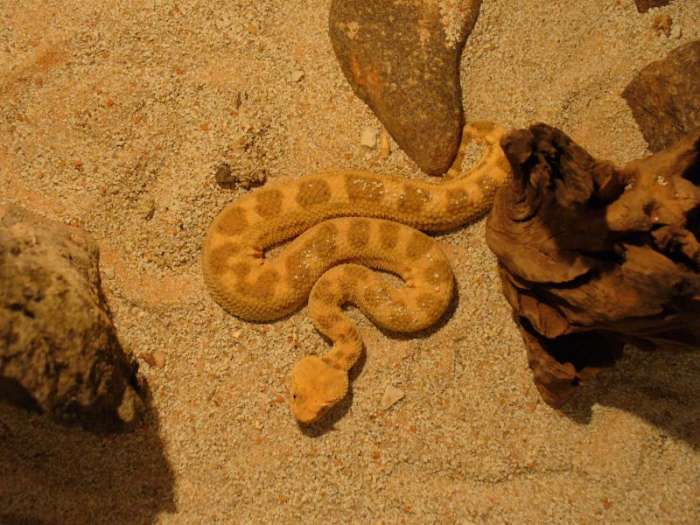
Location: North Africa.
The Saharan horned viper (Cerastes cerastes) may be the most sand-adapted snake on Planet Earth. The desert factor of this snake is 10/10. Cerastes cerastes looks like it spawned from the very sands themselves, rather than gradually evolving from other vipers. It looks like a sand sculpture that could crumble into thousands of individual particles the moment you touch it.
Cerastes cerastes inhabits both arid semi-deserts and the majestic sand dunes of the Sahara. It’s a true desert snake, never popping up in barley fields or slithering down a street in Cairo. This snake is a master of burrowing, diving below to bury itself in sand all way up to the eyeballs.
The Saharan horned viper is so fond of sand that it even mates while buried below. They’re able to store drops of morning dew on their scales, which they later drink. Cerastes cerastes is also famous for its horns, which are believed to mimic worms and act as a tempter for prey, which are later ambushed. This is a common snake, occurring across all North African deserts.
This desert species also inspired the Greek legend of cerastes, a colossal desert serpent which leapt from sand dune tunnels and swallowed any travellers who dare to approach. Cerastes was supposedly horrifically flexible, and had the horns of a ram. Today, this legend has evolved into the sandworms of science fiction.
| 2 | Western patch-nosed snake |
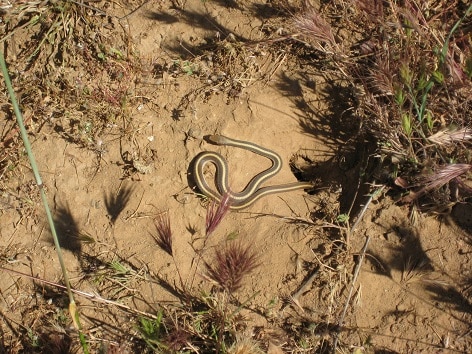
Location: northern Mexico, southern US deserts.
This desert snake is right at home in the kind of parched, minimally vegetated desert which every cowboy/outlaw has ridden across on the big screen. Western patch-nosed snakes average at 66-91cm, but the oldest and longest can reach 117cm, after many years of hard lizard-catching. Size might not be an advantage, as it’s only more centimetres for the ferocious sun to strike, but the western patchnose snake can somehow withstand the onslaught. Its fast speed prevents too much contact with the burning desert, and while they’re usually active during the day, they become nocturnal during the hottest parts of summer.
Its colour scheme is perfect for desert life – beige to mimic the sand, and dusty grey to match the loose rocks. From a distance they look dull, but the patch-nosed snake focusses on survival rather than style. One unusual feature is a large scale above their snout which is free at the edges. This could be a desert adaption which hasn’t been explained yet. Likewise, Salvadora hexalepis has a very twitchy and jerky way of moving.
Salvadora hexalepis eats whatever creatures dare to live in the desert alongside it. That includes not just reptiles, but reptile eggs, and fellow snakes. Patch-nosed snakes use neither venom not constriction – they wrap around body lengths simply to hold prey, and then swallow.
| 3 | Sidewinder rattlesnake |
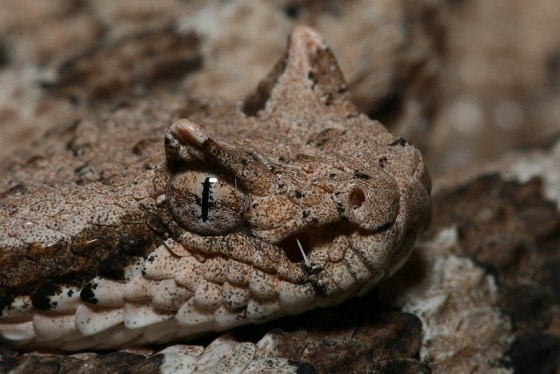
Location: California, Arizona, Utah, Nevada, northwest Mexico.
Out of 33 rattlesnake species in the Americas, the sidewinder rattlesnake is the only exclusive desert dweller. Why its ancestors decided to enter the desert in the first place is a mystery. Maybe mountain lions were trying to eat them, or maybe coachwhips and ratsnakes were outcompeting them for food.
Regardless of why, the sidewinder rattlesnake is now the master of its desert domain, even residing in Death Valley. It’s famous for occupying the Mesquite Sand Dunes, the largest dunes in America. They’re named for the sideways mechanism of motion, which is designed to minimise contact with the burning sands. They lead with their belly, but the head and tail do the work, touching the ground on two very small points.
The movement is weirdly smooth in motion, like they’re floating. Sidewinder rattlesnakes can move at incredible speeds, up to 18mph on a sand dune. Their other desert adaptions include becoming nocturnal during summer, and fleshy horns which shield their eyes from sunlight. Their scales change colour in the sun, becoming lighter during summer for improved camouflage. Sidewinder rattlesnakes can be dangerous, with an LD50 venom score of 2.6-5.5mg, but no deaths have been recorded because few enter their oppressive desert domain.
| 4 | Namaqua dwarf adder |
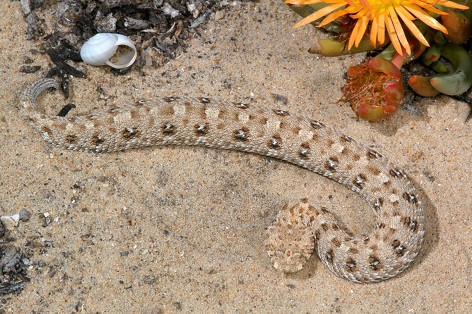
Location: Namibia, South Africa.
Possibly the world’s shortest adder. It ranges from 15-25cm as an adult, with the longest length of all time a mere 27.6cm. The Namaqua dwarf adder lives in the coastal Namib desert of Namibia, a series of pristine yet harsh white dunes, and strays as far as 30km inland in the desert.
This species’ colours make it a master of desert disguise. Its main colour is beige to mesh with the sand, intermingled with small, smudged, black-brown circles to double for tiny rocks. Combined with its small size, the Namaqua dwarf adder is nearly impossible to spot on the Namibian sand dunes. The only chance is when it moves, using the classic sidewinding movement. The Namqua dwarf adder is sometimes left off the list of sidewinding snakes, but the pictures don’t lie.
Being in the centre of a bone dry desert, you probably won’t meet this snake anyway, but its bite can produce swelling, intense pain, discoloration and oozing, according to a victim’s (he survived) report from 1981. Namquada dwarf adders are shy and default to flight before fight, but if cornered they’ll try to intimidate with hissing and bluff, then real strikes.
| 5 | Afro-Asian sand snake |
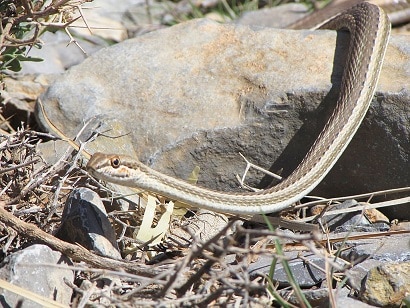
Location: central Asia, Middle East, north Africa.
Also called Psammophis schokari, this flexible snake inhabits over a dozen countries. This snake isn’t strictly adapted to deserts like the Saharan horned viper, lacking adaptions such as sidewinding, but is tough enough to slither wherever it wants without a worry in the world. The Afro-Asian sand snake reaches 128cm in length, and is particularly known for its speed and agility. Its camouflage doesn’t match the horned viper either, but is more than enough to hide from lost trekkers. It’s an extremely thin desert snake, with focussed, ordered beige and brown strips alternating. Its face looks focussed as well, with large clear eyes. Its belly is whiter, but again with speckles of sandy beige.
Another name for this desert snake is the Schokari Sand Racer. One desert-survival trick is a nasal secretion from their nose, which they rub along their entire body. The substance is rich in lipids, and is theorised to seal in water against the forces of evaporation, granting them immunity against the oppressive yellow sun. A study found that the rubbing took 79 seconds from start to finish.
One desert zone they’re famous in is India’s northern Rajasthan region, particularly the Thar desert. This is the world’s 20th largest desert, crossing the border with India and Pakistan, home to large sand dunes and 50 degree temperatures.
| 6 | Péringuey’s Adder |
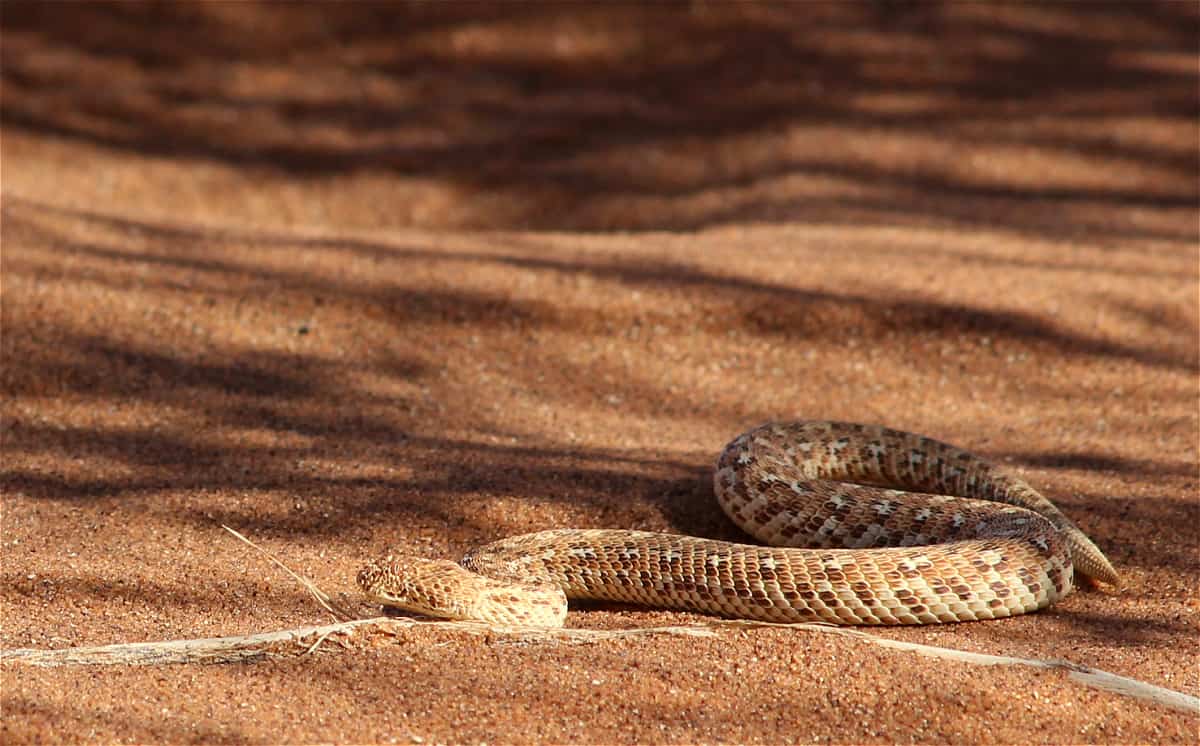
Location: Namibia, Angola.
Peringuey’s adder is a neighbour of the Namaqua dwarf adder, sharing its Namib desert sand dunes. It’s another tiny viper at 18-28cm, occasionally reaching 32cm. At first glance, the two species look very similar, with sandy shades for blending in and sharply keeled scales that give it a furry look. However, its eyes are beadier and more orange, and positioned high on its head to view the sky when burrowed in sand (like the desert sand boa).
Peringuey’s adder glides across the white sand dunes, only occasionally straying to harder soils. It’s sequestered into the ecological niche it chose, but has many nifty adaptions to survive. They’re able to drink water droplets collected on their scales, when fog moves in from the Atlantic ocean and condenses. They’re a sidewinding snake, almost floating above the sand using just their head and tail to propel them, minimising contact with the burning sand. They stick to sidewinding even when on harder, rockier soils – their desert lifestyle has caused them to forget other methods.
Peringuey’s adder has a secret way to acquire water. Rather than drinking, it just swallows a big proportion from the lizards it eats. Barking geckos (the Ptenopus family) are their favourite prey species, along with rain frogs.
| 7 | Saw-scaled viper |
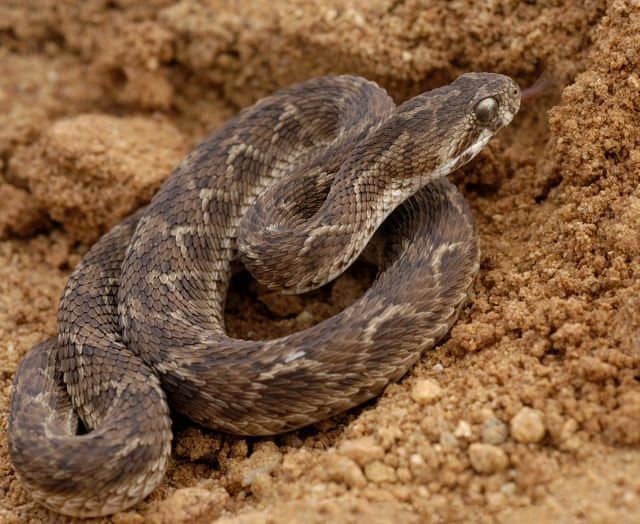
Location: Indian subcontinent, central Asia, Middle East.
If you’re walking through the Thar desert and here weird raspy noises coming from a cactus, then you know your life is in danger. You’ve probably just met the saw-scaled viper, a small (38-60cm) yet extremely dangerous snake, part of India’s “big 4” of annual snake killers. Saw-scaled vipers have a huge range stretching from Bangladesh to Oman, but prefer drier, arid areas. India’s Thar desert is a particular hotspot, home to a subspecies called Sochurek’s saw-scaled viper. They’re a sidewinding snake, using a nearly identical method to the sidewinder rattlesnake 1000s of miles away, despite being far removed in evolution.
Saw-scaled vipers also survive the desert heat using their nocturnal nature. For shelter, they don’t burrow into sand, but seek out existing burrows instead. This is the deadliest desert snake of all. They do a double coil in a figure of 8, allowing them to pounce like a spring. They produce only 15mg of venom per bite, but 9mg is more than sufficient to kill a human being. The wound begins swelling 3 minutes after bite, and after an hour, the entire limb can be swollen.
Indian desert dwellers have some weird traditional remedies to combat these symptoms. They believe that in the desert landscape, the peacock is the saw-scaled viper’s mortal enemy. Hence, they wrap a tourniquet of peacock feathers (called a morpunki) around the bite wound, topped off with a mulch of neem leaves, and a helping of butter or ghee to expel the venom.
| 8 | Western shovelnose snake |
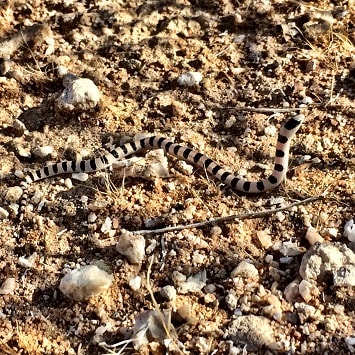
Location: Arizona, California, Nevada, northern Mexico.
It must be fun for desert snakes. No matter how small and weak they are, they have their own undisputed kingdom which the boa constrictor and king cobra would wither and die in if they tried to invade, even if they teamed up. The Western shovel-nosed snake is such an example of the perfect niche occupier. It’s very small at 25-43cm, and has no venom, but manages to survive in Death Valley, the hottest place on Earth.
Western shovelnosed snakes (Chionactis occipitalis) are named for their deeply inset lower jaw, which frees up the top half for highly efficient burrowing, deep into soils where it can escape the sun. They also have a surprisingly muscular body, designed to “swim” through the sand.
Their natural homing instincts keep them safe. Chionactis occipitalis can be found in lightly vegetated deserts, featuring creosote bushes, cacti, and mesquite, but are naturally drawn to any area with sand, like a duck to water, to allow their desert skills to rise to the forefront. Western shovelnosed snakes have a more vibrant colour scheme than some desert snakes, with alternating black and cream with orange splashes, looking slightly like a gift shop souvenir.
| 9 | Sindh awl-headed snake |
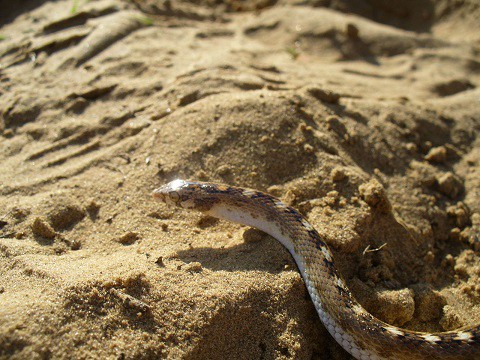
Location: India, Pakistan.
A mysterious sand serpent from the Thar desert. Lytorhynchus paradoxus is a true desert snake and only inhabits dry and parched places. They measure 38cm at most, and have an unusually shaped facial profile when you zoom in. Their tongue is light pink, but the rest is pure desert in snake form, just as Asian vine snakes seem to embody the jungle.
Its colour scheme is sandy beige with occasional dark brown patterns, and a white belly. Even its irises are a sandy colour, surrounding a round black pupil. Nature has apparently concluded that this is the ultimate colour scheme for desert creatures (green wouldn’t do much good). The awl-headed snake has the usual pointed snout for burrowing, and it tends to burrow when alarmed by intruders, seeking a quick escape. Its diet consists of skinks and geckos, and not tourists whose car have broken down.
Lytorhynchus paradoxus is a relatively unresearched desert snake. As recently as 2021, it was being found in new areas of Indian Rajasthan, and another 2021 study expanded its range in Pakistan.
| 10 | Desert sand boa |
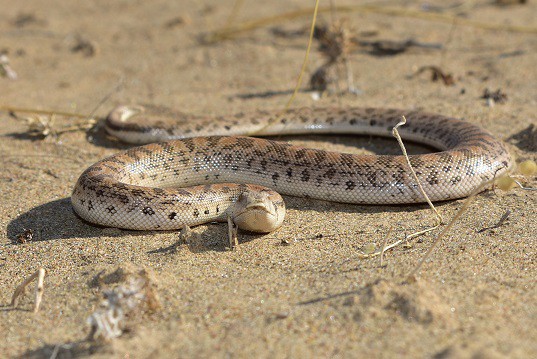
Location: Iran, Arabian peninsula.
A short snake at 35-55cm, with a record of just 91cm, yet thick bodied, which it uses to constrict prey. Eryx miliarius is interesting for having a head and tail which are almost the same width. It’s almost certainly to confuse predators – they’re heavily hunted by birds, including the long-legged buzzard, to which it contributes up to 18% of calories.
Desert sand boas are most fond of sandy areas in semi deserts. They sometimes inhabit harder, rockier places, but any place they can burrow is the ultimate home to them. This snake regularly dives in and out of sand in order to lurk in ambush, much like other eryx sand boa species. Zoom in and you can see the special desert adaptions, including eyes orientated slightly upwards, to grant them superior vision with only their head popping out.
This sand dweller is non-aggressive and rarely tries to bite humans, but can launch from the desert sands like a shot arrow if prey is walking past. Their range is huge, and in the western reaches of Kalmykia and Chechnya, there’s a subspecies (eryx miliaris nogaiorum) which is far blacker than normal.
